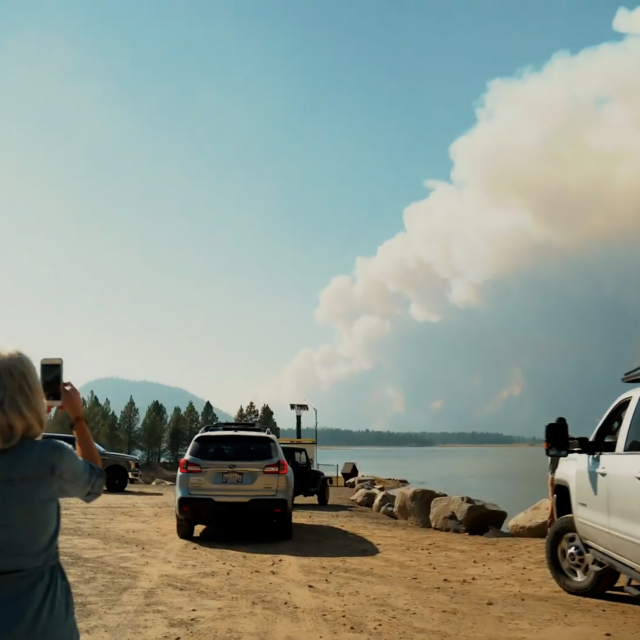A four part blog series by Ten Across digital journalism fellow Taylor Griffith. In this series Taylor reflects on current goals, collaborations and strategies for building resilient communities across the naturally inundated southern U.S. region.
Coolidge, Arizona is one of several historic southwestern farming towns fed by the dwindling Colorado River. Located in the heart of Pinal County, Coolidge was one of the first communities to lose its entire share of the Colorado River after the Federal Bureau of Reclamation declared a Tier II shortage on the lower basin states last August. Pinal farmers lost 87% of their supply within the Central Arizona Project immediately to prepare, then 100% this January.
In the meantime, the remaining stakeholders continue to argue their case for priority to the dismal flows as they pass yet another federal deadline without coming to a consensus on conservation or allocations.
Coolidge is also a town I spent the last year in as a lone reporter covering local stories impacting its community of just under 15,000 residents. The Colorado River crisis being one of them. Economic development being another.
Over the last decade, as a 10-year megadrought eventually turned 20 years old, Coolidge’s current mayor and his previous councils worked to annex hundreds of acres of new land, enticing major manufacturers Nikola Motor and Procter & Gamble to their coveted Inland Port Arizona and several new housing projects, all in an attempt to realize a more economically diverse and thriving community, no longer propped up or defined by agriculture.
Despite progress being made in that regard, Coolidge has long had its share of ups and downs in the small business and real estate markets, struggling to keep independent retailers open for more than a year or large swaths of single-family home projects in development. As many of its residents will tell you, Coolidge is a town in which the 2008 housing bubble never really left.
Acres of unfinished single-family home plats and communities initiated prior to 2008 still dot various parts of town. All but the homes materialized in these unique liminal spaces and relics of a volatile market. Driving through, they appear almost as if one day, the entire community was beamed up into the sky by extraterrestrial beings, leaving just a few jutting water and electric connections, sidewalks, generators and fences with nothing and no one to serve. Some of those developments are starting to come back to life, just in time to support the growing local workforce in manufacturing.
As I came to understand both the goals of the city to expand, and the Colorado River crisis in greater intimacy, I started to wonder — where does Coolidge plan to get the water to support these goals for decades to come? Is this a ‘take it while you’ve got it’ situation? Or, are we planning for the future?
I had spoken to numerous community sources about their experience of either losing their own generational farm or their disappointment in seeing a neighbor close up shop amid the river shortages. Then, for those farmers who hadn’t yet given up, I observed fatigue in their preparation for the 23rd year of serious drought that has forced them to become fully reliant on finite groundwater wells or what can still be drawn from the Gila River at San Carlos Reservoir, an equally parched river as average global temperatures climb.
I also began to worry about the local industrial and residential developments of the present and future that are likely to have to rely on those same measured aquifers. Eventually, I couldn’t shake the feeling that maybe business should not be continuing as usual. Maybe the water situation is still much more dire than we are being led to believe.
As a young reporter, I would often pose these questions to local officials and industry representatives expecting responses that reflected the urgency I felt — but I didn’t consider statements such as the ones I was seeking would obviously devastate either their livelihoods or visions of the community. And, who knows, maybe I was participating in a bit of catastrophizing. I couldn’t be sure.
But, I wanted to find out.
Earlier this year, I attended the Ten Across summit in Houston still as a small town, emerging reporter that had only experienced the climes and culture of Arizona my entire life.
I left the three-day convening feeling a greater connection to my neighbors along the Interstate-10 facing similar and vastly different climate challenges. And although our situation at times appears dire — with historic droughts and wildfires to the west, flooding and billion-dollar hurricanes to the east, and extreme heat throughout — I was encouraged to see there are still many determined and brilliant leaders, thinkers and organizers across all levels, looking to collaborate and adapt to this new world.
I have since joined the team at Ten Across, because I believe in the power of knowledge, community and collaboration. If we hope to prevent historic inequity and human loss amid escalating natural disasters, we will need to work consistently across state lines and professional disciplines in order to develop the functioning and sustainable communities of the future.
Over the next four weeks, I am going to be sharing my own observations and understandings of current research, projects and goals for tackling climate related inequity and risk presented by members of our growing 10X network at the 2023 summit in Houston.
I hope you will join me. The next post entitled “The Future is Here: Experts Discuss Possibility of Solving One Water Crisis with Another” to release March 24, 2023.
__________________________________________________________
Taylor Griffith was born and raised in Chandler, a city just outside of Phoenix, Arizona. A proud citizen of this beautiful, diverse, and sometimes relentlessly hot state, issues related to water, equity and climate change are influential to her work as the current digital journalism fellow at Ten Across and previous bylines in The Coolidge Examiner.




